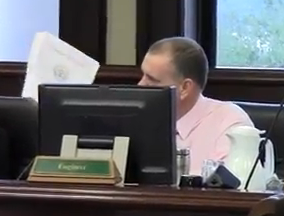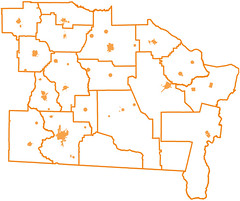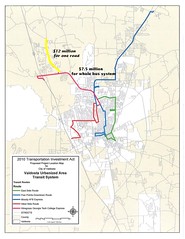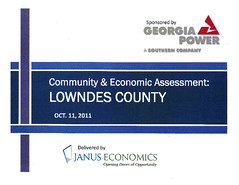 We don’t know, because the county doesn’t post the details of
agenda items, just cryptic shorthand that may mean something
to Commissioners or staff, but that means nothing to the public.
We don’t know, because the county doesn’t post the details of
agenda items, just cryptic shorthand that may mean something
to Commissioners or staff, but that means nothing to the public.
At this morning’s work session and tomorrow evening’s regular session, the Lowndes County Commission has a brief but eventful agenda, including a modification to the alcohol ordinance, an alcohol license, a DHS grant a GDOT grant for a road project on Davidson Road (presumably related to the new Moody AFB gate), two road abandonments, and this interesting item:
6.h. Request from Superior Court to establish salary of the Community Corrections DirectorYour guess is as good as mine.
Here’s the agenda.
-jsq
Continue readingLOWNDES COUNTY BOARD OF COMMISSIONERS
PROPOSED AGENDA
WORK SESSION, MONDAY, FEBRUARY 13, 2012, 8:30 a.m.
REGULAR SESSION, TUESDAY, FEBRUARY 14, 2012, 5:30 p.m.
327 N. Ashley Street – 2nd Floor











 Another issue here is that there will be no public hearing on this issue
unless someone ASKS for it. Without a hearing, it just goes forward
with no other public information about being presented. Anyone may ask
for a hearing, but I would especially think that there are people who
really need a functional system that is not just focused on people
who have access to Medicaid as a payment source due to illness or
disability. Requesting such a hearing before January 24 would give the
opportunity to have all this information presented and for questions to
be asked and answered.
Another issue here is that there will be no public hearing on this issue
unless someone ASKS for it. Without a hearing, it just goes forward
with no other public information about being presented. Anyone may ask
for a hearing, but I would especially think that there are people who
really need a functional system that is not just focused on people
who have access to Medicaid as a payment source due to illness or
disability. Requesting such a hearing before January 24 would give the
opportunity to have all this information presented and for questions to
be asked and answered.
